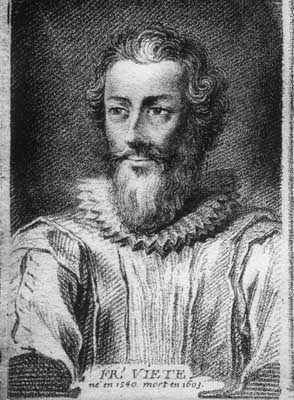Источник: In artem analyticem Isagoge (1591), Ch. 1 as quoted by Jacob Klein, Greek Mathematical Thought and the Origin of Algebra (1934-1936) Appendix.
Франсуа Виет: Цитаты на английском языке
Источник: In artem analyticem Isagoge (1591), Ch. 1 as quoted by Douglas M. Jesseph, Squaring the Circle: The War Between Hobbes and Wallis (1999) p. 225
From Frédéric Louis Ritter's French Tr. Introduction à l'art Analytique (1868) utilizing Google translate with reference to English translation in Jacob Klein, Greek Mathematical Thought and the Origin of Algebra (1968) Appendix
In artem analyticem Isagoge (1591)
